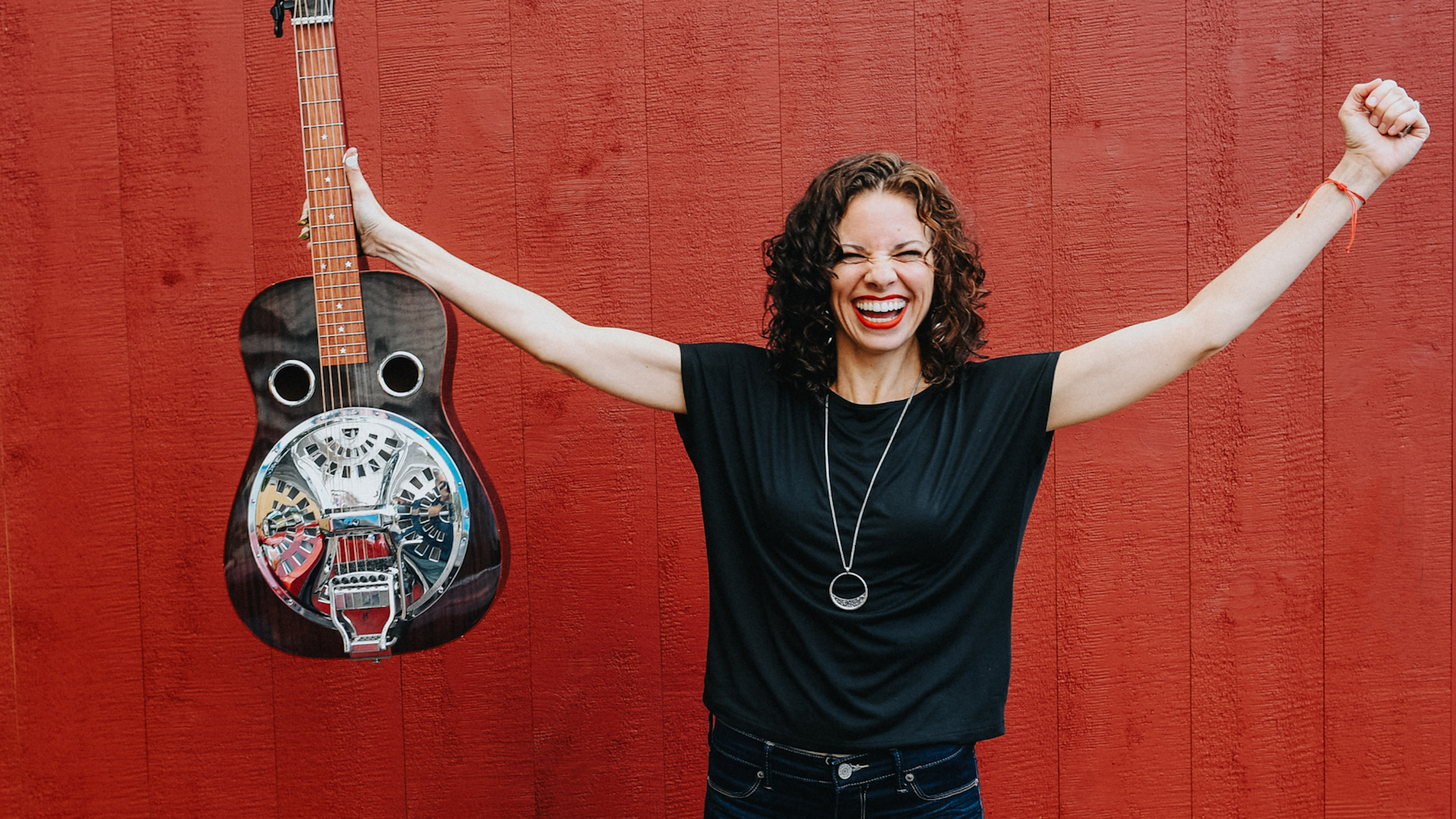
Photo credit: Tim Rice
Tell us about your tour vehicle. Any notable breakdown stories?
I recently had to retire my trusty bright red 2005 Toyota Matrix. It had over 300,000 miles (the odometer wouldn’t count higher) and saw me through hundreds of Red Molly and solo shows all around the country. SOOOO many adventures in that car, including the time the alternator broke while trying to get to Pittsburgh to beat a snow storm. It gets dark real fast when all your lights and engine die.
How do you eat cheaply and/or healthy while on tour?
Surprisingly enough I go to grocery stores. I love those bagged salads with the dressing inside. They cost about $4 and last me two meals! I also like bringing my own set of bamboo utensils with me.
How many strings do you break in a typical year? How much does it cost to replace them?
Honestly I’ve never broken a string! Dobro strings are pretty heavy (56 on the bottom, 17 on the top) and I’m sliding on them with a bar instead of my fingers, so maybe it’s not enough to wear them down.
Where do you rehearse?
My rehearsal space doubles as my recording studio. It’s a tiny 3.5 x 4.5 foot closet made smaller by insulated sound panels. The nice thing about a space that size is how it can be heated using a few strands of twinkly lights! It also helps me focus because there’s not enough room for more than me, my laptop, mics, and instrument.
What was the title and a sample lyric from the first song that you wrote?
Early on I wrote a song called “Waitin’ for the Bus” that detailed my Boston commute. I don’t remember all that much about it except that I quoted a sign from the “T” (Boston’s subway system) that said “Buy tokens now, save time later.” I’d also go off into improvised tangents talking about different bus transfers and details that only a local would know. It was a crowd-pleaser, or so I thought at the time!
Describe your first gig.
My very first gig was in a batting cage with my high school garage band. I had just learned to play electric bass because I was bored just singing harmony. My fingers were blistered from practicing. The drummer had to keep pulling his stool back from the edge where the balls drop down. Being inside the cage felt cool though because I was obsessed with the Blues Brothers at the time and it reminded me of the chicken wire they had at their first gig!
What was your last day job? What was your favorite day job?
I worked as an Occupational Therapist for many years and still have an active license to practice in NY and NJ. I’d like to start working as a hand therapist specializing in musicians injuries. More than 90% of musicians will have an injury (or two) during their career, but they often don’t know where to turn. It would feel really good to help my people that way!
How has your music-related income changed over the past 5-10 years? What do you expect it to look like 5-10 years from now?
10 years ago I was touring the world full time with Red Molly. Our income was based on 50% physical CD sales and 50% gig pay.
In 5-10 years I expect physical merch sales to drop out of the picture entirely. Though I’m still going to record and put out music one way or another. People definitely need music in their lives, but the music won’t be there without fair pay for the folks who create it. I have hope for sustainable income sources through musician-focused companies like BandCamp and hope to see live gigs and tours come back to full strength again. That’s the most fun and authentic way to share my music, so I hope it never goes away!
What one thing do you know now that you had wished you knew when you started your career in music?
I’ve always prioritized practicing, which is great, but I wish I’d put equal emphasis on total body physical conditioning. We’re athletes out here and need to treat our bodies that way to support a long and healthy career.
